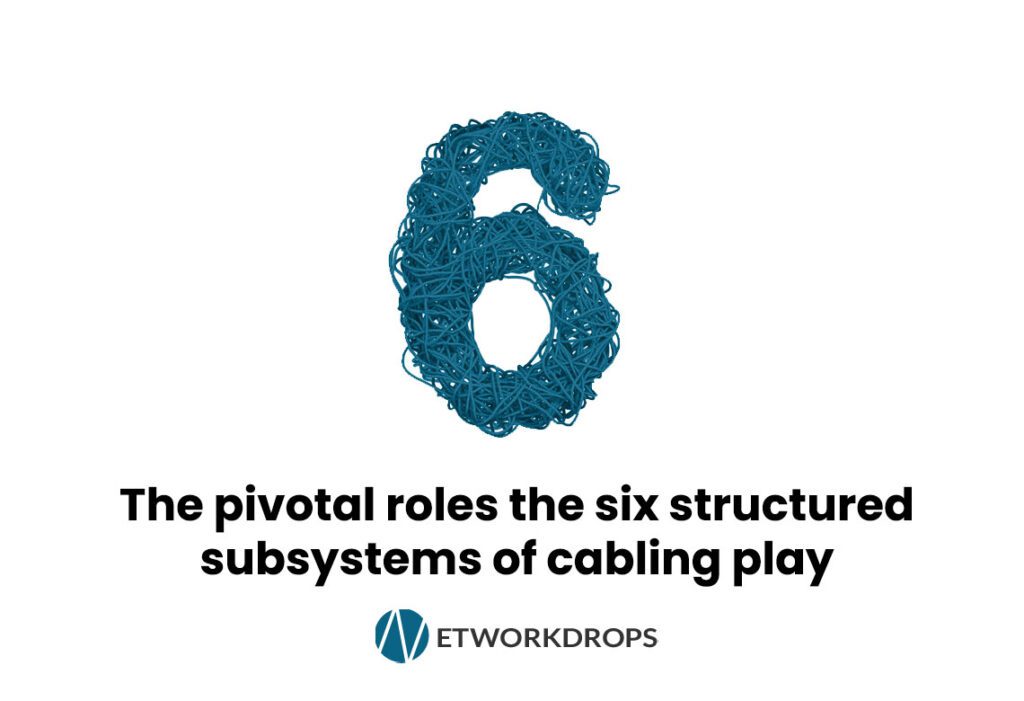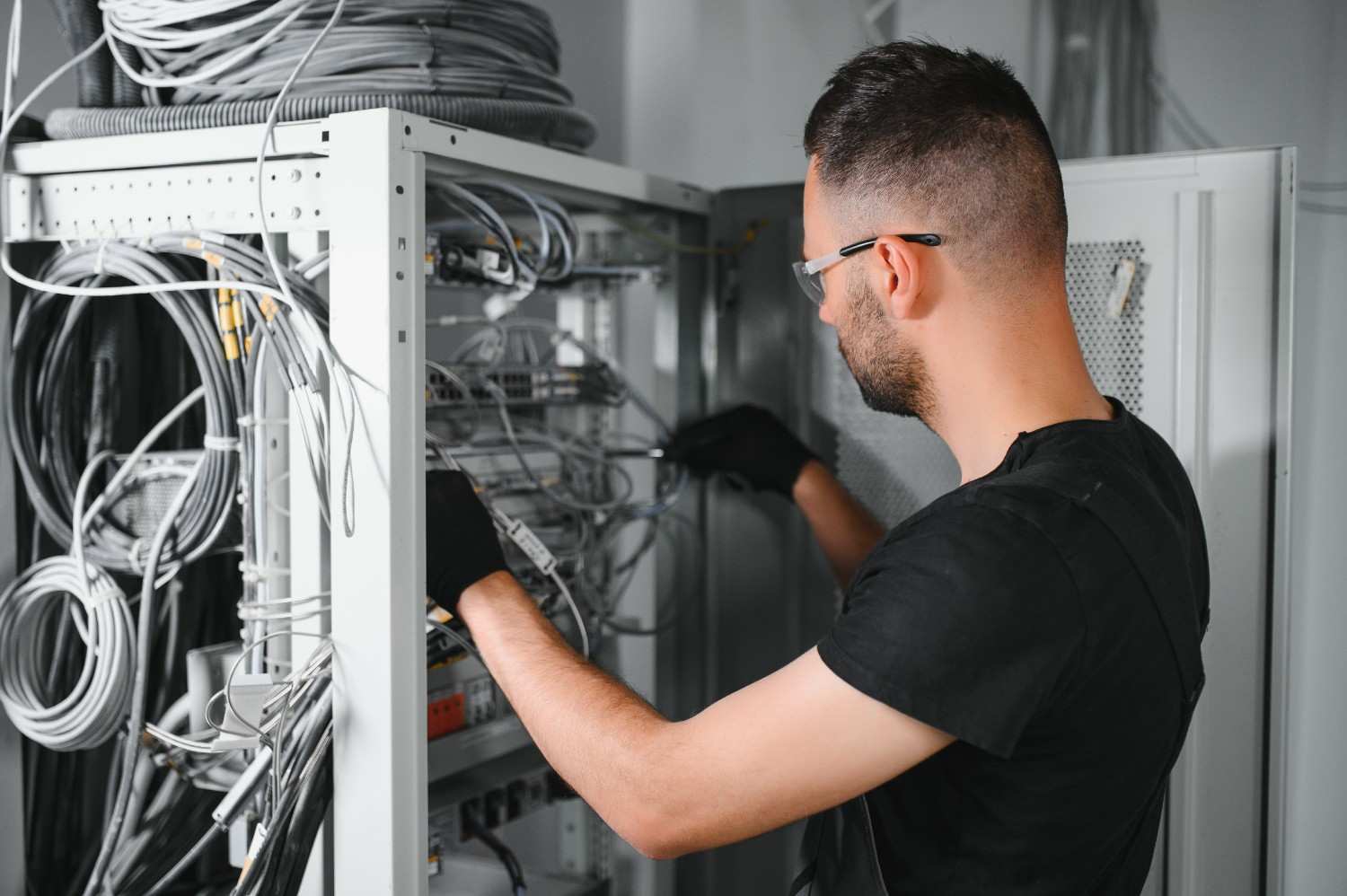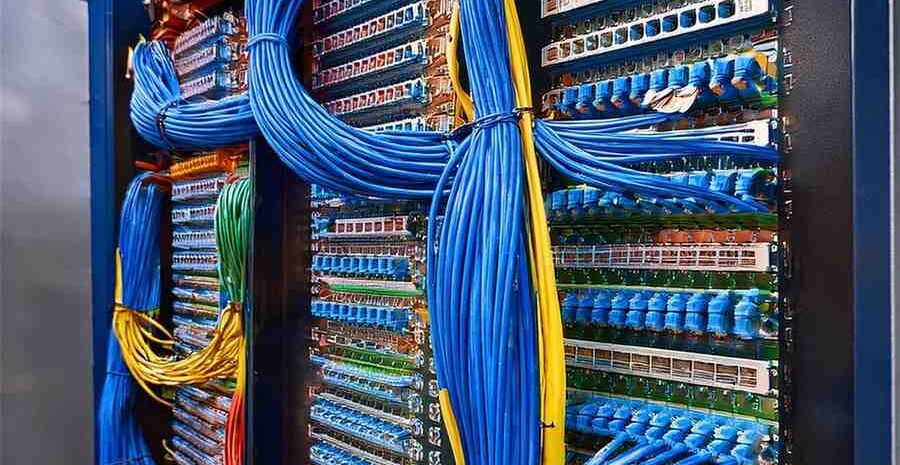Summary : The six structured cabling subsystems—entrance facilities, equipment rooms, backbone cabling, horizontal cabling, telecommunications rooms, and work areas—are the backbone of reliable network infrastructure. Each plays a pivotal role in ensuring performance, scalability, and seamless connectivity. Understanding these subsystems helps businesses design efficient IT environments that reduce downtime, support future growth, and maximize return on investment. Mastering structured cabling ensures a strong foundation for modern communication systems, making it essential for long-term network success.

Despite the growing prevalence of wireless networks, structured data cabling retains its crucial position in the backbone of any robust IT infrastructure. Network Drops ensures New Jersey and Pennsylvania companies an uninterrupted, high-speed data flow that’s often unmatched by their wireless counterparts. In data centers, corporate facilities, and other locations that necessitate seamless data communication, these hard-wired connections prove to be indispensable.
They offer consistent performance, superior security, and a level of reliability that is critical for running complex, data-intensive operations. Consequently, diligent planning, deployment, and management of network drops form a fundamental aspect of network design and implementation.
Structured cabling, as the backbone of efficient communication, necessitates meticulous design and implementation. This is critical for achieving seamless, reliable, and secure data transmission. The strategic layout and accurate installation of network drops can drastically enhance network performance, ensuring smooth and uninterrupted data flow.
Proper cabling management also minimizes potential security risks and facilitates faster troubleshooting of network issues. Thus, the significance of well-planned and proficiently executed network drops extends beyond mere physical connections; they lay the foundation for a dynamic, resilient, and secure IT infrastructure.
Choosing Network Drops for your structured cabling needs presents numerous advantages. We are renowned for our meticulous attention to detail, ensuring the seamless integration of cabling into your broader network design. Our team of dedicated professionals is committed to delivering superior performance, reliability, and security, all at competitive pricing.
With our vast experience, we understand the unique requirements of various business environments, and we customize our solutions to meet your specific needs.
Whether it’s a data center, corporate facility, or any other workplace demanding high-speed data communication, you can count on Network Drops to provide a structured cabling solution that lays the foundation for your organization’s efficient communication.
Structured cabling operates through six crucial subsystems that collectively establish a dependable platform for end-to-end data transmission. These include the Entrance Facility, Equipment Rooms, Backbone Cabling, Telecommunications Rooms or Enclosures, Horizontal Cabling, and Work Area Components. Each subsystem plays a specific role, working in unison to deliver high-speed, reliable data flow across the entire network infrastructure.
Understanding the significance of each subsystem is crucial for organizations aiming to build an effective structured cabling system tailored to their specific requirements. The Entrance Facility serves as the point of convergence for all external network services, essentially being the gateway between the provider’s network and the internal cabling structure. Equipment Rooms act as centralized hubs housing necessary networking equipment, while Backbone Cabling interconnects different rooms on the same floor or across different floors or buildings.
Telecommunication Rooms or Enclosures house the termination points for horizontal cabling, serving as vital junction points for the distribution of data. The Horizontal Cabling infrastructure supports connectivity on each floor, linking Telecommunication Rooms to individual workstations. Finally, Work Area Components embody the end-user devices and outlets, essentially the points of use for the system. By understanding these elements, organizations can design a cabling system that is efficient, scalable, and suited to their specific needs.

The Entrance Facilities represent the initial subsystem in structured cabling. This is the point of convergence where the external cabling interfaces with the internal wiring of the premises. It is essentially responsible for the protection of the system by housing critical safeguarding devices such as lightning arrestors and surge protectors. Ensuring a secure passage for both data and power feeds, entrance facilities play a pivotal role in preserving the integrity and reliability of the communication network within an organization.
Equipment Rooms, the second subsystem in structured cabling, are centralized spaces designed to house equipment and consolidation points that serve the users inside the building or campus. These rooms contain servers, switches, routers, and other essential hardware that directly impact the performance and functionality of the network. The layout, ventilation, and security of the equipment rooms are critically important, as these factors can significantly influence the durability and efficiency of the network equipment. Therefore, careful planning and implementation are indispensable when constructing an equipment room to ensure optimal network performance and longevity.
Backbone cabling stands as the third subsystem in structured cabling. Backbone cabling is the vital interconnectivity link, providing the pathway from equipment rooms to other spaces like telecommunication rooms and entrance facilities. The backbone or vertical cabling accommodates the heavy data flow within the system and often includes high-capacity cables. A crucial aspect of this subsystem is the implementation of environmental controls.
Environmental Controls are integral to the third subsystem of structured cabling: the Backbone Cabling. These controls are specially designed to maintain optimal conditions for active network components. The primary objective of these controls is to create a conducive environment that fosters the smooth operation and longevity of the network infrastructure. This includes temperature and humidity controls that prevent overheating and condensation, which can degrade the quality of the network equipment. Furthermore, they also encompass measures to prevent dust accumulation and interference from electromagnetic sources. Overall, environmental controls in backbone cabling ensure the preservation of the network’s health, integrity, and efficiency.
The fourth subsystem in structured cabling is Horizontal Cabling. This subsystem interconnects telecommunications rooms, equipment rooms, and entrance facilities, usually employing fiber-optic or high-bandwidth copper cabling for swift, reliable data transmission.
Horizontal Cabling serves as the primary path for data transportation between the work area outlet and the telecommunications room. It forms a critical part of the connectivity, bridging the gap between the network backbone and the end-user devices. By delivering data from the central network infrastructure to individual workstations, it ensures seamless communication and data transfer. This subsystem often involves the use of patch panels and cross-connects in the telecommunications room to allow flexible and efficient network management. Hence, the design and installation of horizontal cabling demand careful consideration to ensure optimal network performance and reliability.
The horizontal cabling layout can be a direct point-to-point configuration or may utilize consolidation points or multi-user telecommunications outlets. The design and setup of the horizontal cabling need to be well planned and executed to ensure efficient data transfer and to provide flexibility for future modifications or expansions.

Telecommunications Rooms, the fifth subsystem in structured cabling, house cabling terminations and network equipment that serve specific parts of the building or campus. These rooms are critical in maintaining the operation of the cabling system. They contain patch panels, switches, and other essential components that facilitate data transfer and communication within the network. Carefully designed and maintained, Telecommunications Rooms ensure the smooth functioning of the cabling system, thereby playing a key role in sustaining effective and reliable communication across the organization.
The sixth and final subsystem in structured cabling is Work-Area Components. This involves all the devices connected to the cabling system, including computers, phones, printers, and wireless access points. These devices are linked to the horizontal cabling subsystem to ensure a smooth, consistent connection to the network. The components in the work area are the physical end-points of the structured cabling system, serving as the user’s interaction point with the network.
Work-area components are the physical interface through which users interact with the network. They represent the last mile in the structured cabling journey, delivering data directly from the network to the user’s device. This makes the performance, connection, and functionality of these components crucial for network efficiency and reliability.
Without properly connected and functional work-area components, the robust infrastructure provided by the other subsystems would be futile. For instance, a computer with a faulty network interface card (NIC) or a printer with a damaged Ethernet port can obstruct the data flow, negatively impacting the network performance. Therefore, it is essential to regularly inspect, maintain, and, if necessary, replace these components to ensure the network’s overall health and efficiency. This underscores the significance of understanding and ensuring the proper connection and functionality of work-area components in maintaining an efficient, reliable network.
The backbone of any reliable and efficient network lies in its structured cabling system. A well-implemented structured cabling system brings forth a multitude of benefits. Predictable Performance is one of the key advantages of such a system. By adhering to a standardized architecture, structured cabling ensures that the network operates consistently under varying conditions and usage patterns, thus facilitating a steady network performance.
Maximum Availability is another critical benefit. High-quality, standardized cabling coupled with proper installation and management practices can significantly reduce network downtime, ensuring higher availability for mission-critical applications.
Structured cabling systems are designed with Flexibility for Changes in mind. As organizations expand or adapt to changing business needs, the structured cabling system can accommodate the addition, removal, or relocation of network devices with minimal disruption. Finally, structured cabling offers Long-term Usability. Unlike ad-hoc cabling solutions, a structured cabling system can support future applications and technologies without requiring significant infrastructure overhaul. Thus, a well-implemented structured cabling system serves as a strategic, long-term investment, preventing downtime and accommodating evolving needs.
Best Practices and Standards
For a successful installation, it is imperative to adhere to the established standards from ISO/IEC, CENELEC, and TIA. These guidelines provide the benchmark for the design, installation, and management of structured cabling systems, ensuring optimal network performance.
The choice between Cat 5e, Cat 6, and Cat 6A cabling mainly depends on the network’s speed and distance requirements. While Cat 5e cabling is suitable for networks with a data rate of up to 1 Gbit/s, Cat 6 and Cat 6A cables provide better performance at higher data rates, supporting speeds up to 10 Gbit/s. However, Cat 6 has a limit of 55 meters for 10 Gbit/s networks, whereas Cat 6A can support the same speed for up to 100 meters.

The choice between Unshielded Twisted Pair (UTP), Shielded Twisted Pair (STP), and Fiber optic cabling should be informed by the environment and the expected Electromagnetic Interference (EMI). UTP is widely used due to its cost-effectiveness, but in environments with high EMI, STP or Fiber optic cabling might be the better choice. Cabling routing should also be carried out thoughtfully to avoid EMI and physical damage, ensuring longevity and reliability.
Effective cabling management is critical to maintain the network’s performance and ease of maintenance. This includes proper labeling, use of cabling trays, and regular inspection to prevent cabling damage and to facilitate easy troubleshooting.
Environmental factors such as temperature, humidity, and EMI can affect the performance and lifespan of the cabling system. Therefore, these factors should be taken into account in the design and installation of the network. Specialized equipment or insulation may be required in severe conditions.
In conclusion, a successful installation of a structured cabling system requires meticulous planning, careful selection of materials, and adherence to industry standards. By taking these considerations into account, one can ensure the establishment of a reliable, efficient, and future-proof network.
Understanding these subsystems empowers organizations to tailor cabling systems to their data needs, aligning with evolving technology and business requirements. These subsystem frameworks, alongside best practices, ensure an effective strategy to handle business demands.
Network cabling installers are professionals specializing in the installation, maintenance, and troubleshooting of network cabling systems to ensure seamless connectivity.
Locating reliable network cabling installers nearby can be done through online searches or by seeking referrals from businesses that have utilized such services.
Data cabling companies in proximity often stand out due to their expertise, industry experience, and comprehensive solutions catering to diverse networking needs.
Yes, network cablers or cabling companies like Network Drops excel in providing tailored solutions for network drops and structured cabling. They can do speaker installation near you, networking cabling, data cabling near you, and any other manner of network cabling needed for your New Jersey or Pennsylvania business.
"*" indicates required fields
Scott Fcasni is the driving force behind Shock I.T. Support’s commercial datacomm cabling division, delivering expert solutions that power reliable, high-performance network infrastructures. With extensive experience in structured cabling and a commitment to precision, Scott ensures that every project—whether for small businesses or large enterprises—meets the highest standards of quality and scalability.